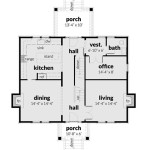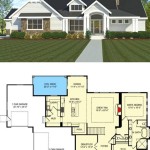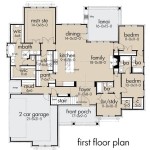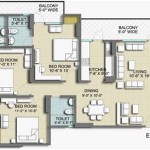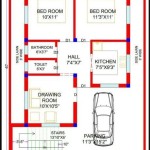Single Story Home Floor Plans: A Guide to Designing Your Dream Home
Single-story homes offer a convenient and practical solution for those seeking a comfortable and accessible living space. With everything located on a single level, these floor plans provide easy navigation and promote a sense of spaciousness. In this article, we will delve into the intricacies of single story home floor plans, exploring the advantages they offer, various design options, and tips for creating a functional and aesthetically pleasing home.
Advantages of Single Story Home Floor Plans
Single story homes provide numerous advantages that make them an attractive choice for homeowners:
- Accessibility: With no stairs to navigate, single story homes are ideal for young children, elderly individuals, or those with mobility challenges.
- Convenience: Having all living spaces on one level eliminates the need to climb stairs, making it easier to move around the home and carry items.
- Openness: Single story homes often feature open floor plans, creating a sense of spaciousness and allowing for seamless flow between different areas.
- Reduced Construction Costs: Single story homes require less materials and a smaller foundation than multi-story homes, leading to potential cost savings during construction.
- Energy Efficiency: Single story homes have a more compact design, which reduces heat loss and improves energy efficiency.
Design Options for Single Story Homes
Single story home floor plans offer a wide range of design possibilities:
- Traditional: Traditional single story homes feature a classic layout with separate rooms for the living room, dining room, and bedrooms.
- Open Concept: Open concept floor plans combine multiple living spaces into one large area, creating a sense of openness and inclusivity.
- Ranch: Ranch-style homes are characterized by their low-slung profile and long, linear layout, often with an attached garage.
- Contemporary: Contemporary single story homes embrace modern design principles, featuring clean lines, large windows, and energy-efficient materials.
- Custom: Custom designs allow homeowners to create a truly unique floor plan that meets their specific needs and preferences.
Tips for Creating a Functional Single Story Home
To maximize the functionality of a single story home, consider the following tips:
- Flow and Connectivity: Plan the layout to ensure a seamless flow between different areas. Create clear paths of movement and avoid unnecessary hallways.
- Natural Light: Maximize natural light by incorporating large windows and skylights. This not only improves the ambiance of the home but also reduces energy consumption.
- Flexible Spaces: Design flexible spaces that can adapt to changing needs. For example, create a room that can serve as a guest room, home office, or playroom.
- Storage Solutions: Consider well-planned storage solutions, such as built-in closets, drawers, and shelves, to keep the home organized and clutter-free.
- Outdoor Spaces: Extend the living space by creating outdoor areas, such as a deck, patio, or porch, that provide a connection to nature and additional entertaining space.
Conclusion
Single story home floor plans offer a myriad of benefits, making them an excellent choice for those seeking a comfortable, accessible, and stylish living space. By carefully considering the advantages, design options, and functional aspects, you can create a single story home that perfectly meets your needs and enhances your lifestyle.

Unique One Story House Plans Monster

Must Have One Story Open Floor Plans Blog Eplans Com

Pin On Homes

40 X 55 2 200 Sf One Story House Plan The Escape

Single Story Floor Plan New Era Homes

Elegant One Story Home 6994 4 Bedrooms And 2 Baths The House Designers Plans Floor

Stylish One Story House Plans Blog Eplans Com

Small One Story 2 Bedroom Retirement House Plans Houseplans Blog Com

Single Story House Plans For Contemporary 3 Bedroom Home

One Story Luxury Living House Plans How To Plan

